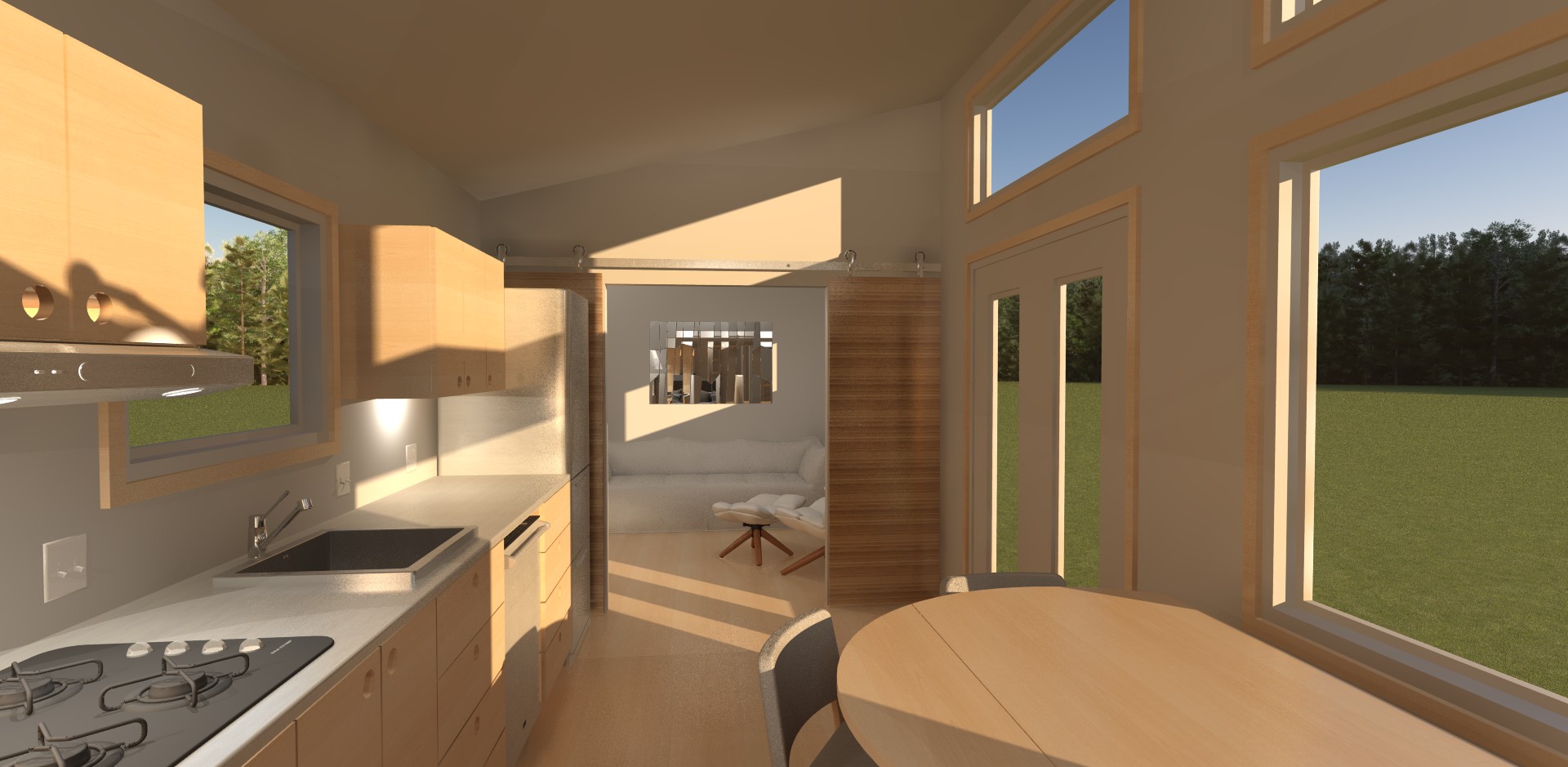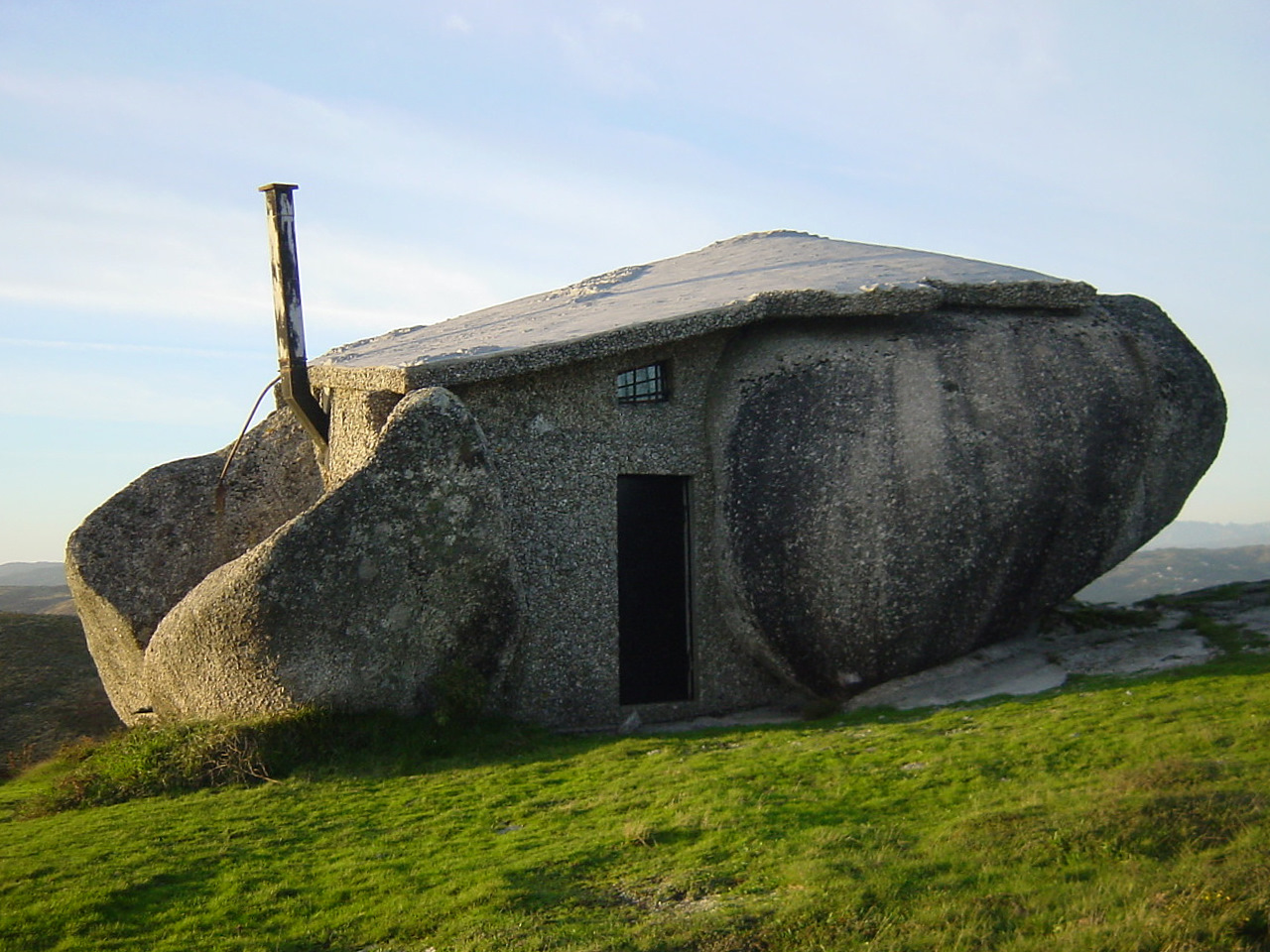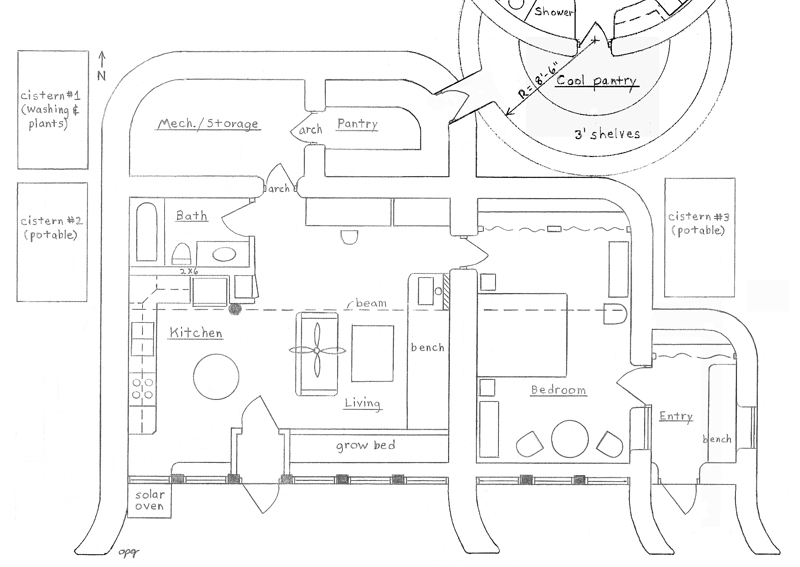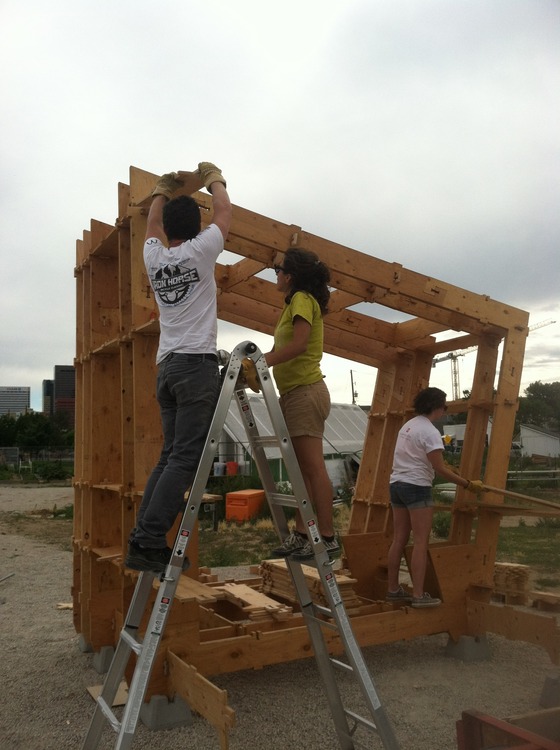The following is a guest post from Michael Tobias, PE, LEED AP, CEM, Founder of New York Engineers.
The basic requirement for a net zero tiny house is generating enough energy to fully cover its usage. To achieve this, the tiny house must first be designed to consume as little energy as possible, and then equipped with a generation system – typically a small photovoltaic array. Energy efficiency measures allow the use of a smaller generation system, which is very beneficial for the scale of a tiny house.
Energy Efficiency Measures for a Tiny House
Heating, cooling, ventilation and lighting account for most of the energy consumption in a tiny house. Therefore, energy efficiency measures should focus on these areas for the best results:
- Heat pumps normally offer energy savings of over 50% compared with resistance heaters, making them a great option for water heating in tiny houses. The hot water can be stored in a tank for direct use, or it can circulate through PEX pipes for radiant heating.
- A high-efficiency mini-split unit is the best option for air conditioning, and it should have the highest SEER rating available to minimize power consumption. For instance, a 9,000 BTU/hour unit with a SEER 30 rating only consumes around 300 watts on average.
- An energy recovery ventilator (ERV) maximizes heating and cooling efficiency, by exchanging heat between the outdoor air supply and indoor air exhaust. This pre-cools outdoor air in summer and preheats it during winter.
- LED lighting achieves savings of over 80% when replacing incandescent bulbs, and over 30% when replacing compact fluorescent lights. LED lamps also unburden the air conditioner because they release less heat.
Energy efficiency measures should be complemented with a high-performance building envelope for the tiny home. Structural insulated panels (SIPs) are are often recommended, since they are easy to install while providing effective insulation. For windows, triple-pane glass with low emissivity coating offers the highest thermal performance.
Using Renewable Energy Sources Effectively
Once a tiny house has been designed to be as efficient as possible, its energy needs can be covered with a smaller generation system. Photovoltaic panels and solar water heaters are the best option for most tiny houses, since they can adapt to a wide variety of site conditions.
A small wind turbine or hydroelectric turbine can achieve good results for tiny house owners, but only if the site has adequate conditions: constant wind or flowing water. On the other hand, sunlight is available almost anywhere, and solar PV systems have simple maintenance needs.
Tiny houses are often built with wheels because mobility offers many benefits. In the case of solar power, a mobile tiny house can stay out of shaded areas to receive maximum sunshine on its photovoltaic panels and solar water heater. Most sunshine comes from the southern portion of the sky in the northern hemisphere, and solar panels achieve a higher output when their tilt direction is towards the south.
While the sun can also provide natural lighting, there may be two negative consequences: glare and solar heating. To prevent this, windows should be installed where they will not face the sun directly – if the best direction for solar panels is south, windows should ideally face north.
Considering that sunlight is not available 24/7, a solar-powered tiny house requires an energy storage system. While the hot water tank accomplishes this function for heat, lithium-ion batteries are a viable option for electric appliances. They have a higher upfront cost than lead-acid batteries, but they last 4-8 times longer and have minimal losses from charging and discharging.
Conclusion
To design a net zero tiny house, energy efficiency measures are strongly recommended. While a less efficient tiny house can also become net zero, it requires a larger and more expensive generation system.
Just like in large homes, heating and cooling account for the largest share of energy consumption in a tiny house, often followed by lighting. Efficiency can be maximized with LED lighting, a heat pump and a mini-split AC, complemented with effective insulation and smart window placement. Once the energy footprint of the tiny house has been minimized, energy needs can be met with solar panels and energy storage.
Author: Michael Tobias, PE, LEED AP, CEM, Founder of New York Engineers.
Image by Michael Janzen.





Ever thought of real passive solar heating? If a house is designed, with more insulation (Classe 30, 420 mm in floor and roof. 295 mm in walls) and low energy triple layered gas filled windows (U-value less than 1,0), it will need much less heating. Often the sun is enough during most of the year – even in colder climates with snow in winter. It will only be on extreme cold cloudy days, that any heating is needed – which will be easily covered by solar panels and a heat exchanger system.
I think i may have listened to a podcast on this subject recently.
I want to design Farnsworth House on wheels. Thats my aesthetic.
I intend on building on a deck over trailer and using steel frame construction to re- interpret Farnsworth House as my Tiny house on wheels design.
One of the major drawbacks of Farnsworth House is insulation due to the necessary elements that are central to achieve its sleek minimalist aesthetic.
Using the principles you discuss here in the article to achieve zero net efficiency. Barring abandoning the design, what could i be looking into regarding system’s to compensate for that aspect of the design and still achieve all or most of the benefits of zero net efficiency?
Hows that for a brain teaser?
Theres a slide show you can check out if you enter Farnsworth House in the search criteria field and check out images.